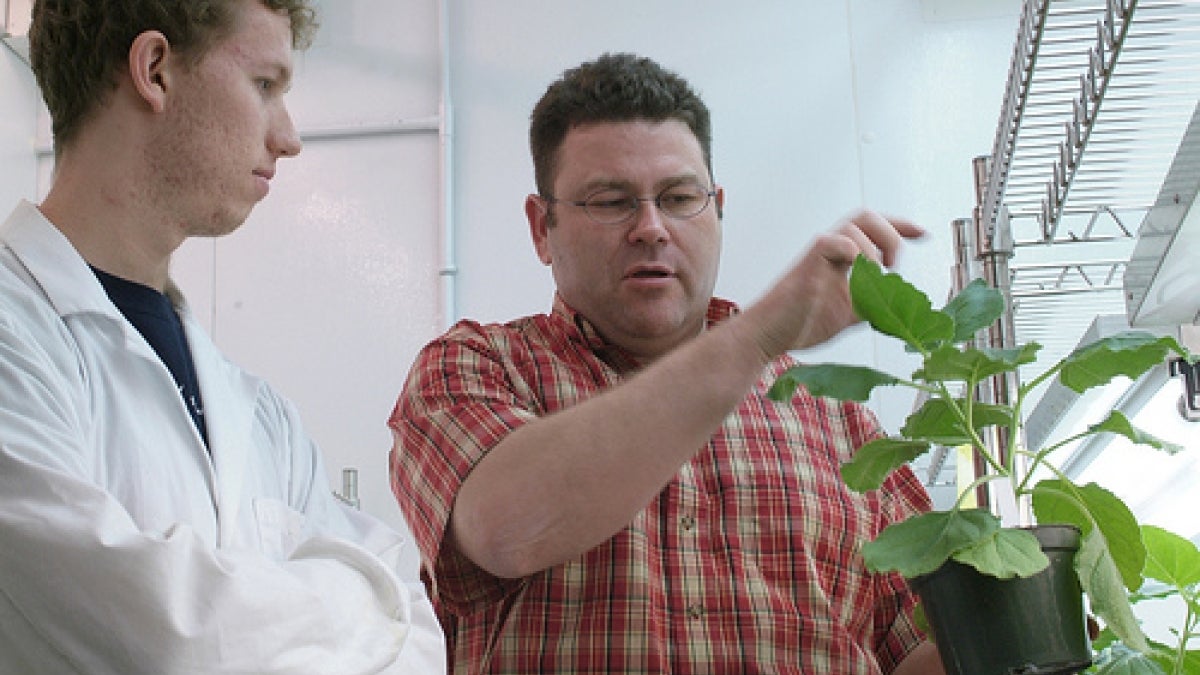Students play critical role in research lab's success

Tsafrir Mor, an associate professor in ASU's Biodesign Institute and the School of Life Sciences, works extensively with undergraduate researchers. In this Q&A, he talks about how he incorporates undergraduates into his work.
Mor is affiliated with the ASU Center for Infectious Diseases and Vaccinology and ASU's College of Liberal Arts and Sciences.
Why do you include undergraduates in your research?
One clear benefit of having a large student body is the fact that among the many students we have, we have many truly exceptional students. Students stay in my lab for a long haul, typically for at least two semesters, but more often for two years or more. This is mutually beneficial because they stay long enough to become truly productive and contribute significantly to our research projects. Most win recognition in authorships on papers, and they have a chance to present their work in conferences, etc.
How do you incorporate students into your work?
Students are assigned a direct mentor who is often either a graduate student, a postdoc or a technician. They typically start by providing support (making solutions, for example) and slowly but surely become more independent and can be trusted to carry out specific experiments. Like all members of my lab, they are expected to present their work during lab meetings and the work of others in our journal club. They are also expected to actively contribute to the discussions, something which develops over time.
What is the focus of your research?
At present, our research focuses on finding solutions to two seemingly disparate medical problems. One project aims to create novel countermeasures against poisoning by organophosphorous chemical warfare (and pesticide) nerve agents. The other project’s goal is to create a preventative mucosal vaccine against HIV-1. Both present two of the major threats to our increasingly interconnected and interdependent world: that posed by chemical (and biological) terrorism and that posed by infectious diseases of pandemic proportions, such as HIV/AIDS.
How many students currently work in your lab?
Currently I have eight undergraduates working with me. I have worked with more than 40 since I joined ASU. I see them daily, and we meet at least once a week during lab meetings. Additionally, I meet with them one-on-one as needed. Most of my students have been molecular bioscience and biotechnology majors, but I have had biochemistry and microbiology majors and others, including students that were double majoring or having unique combinations of major and minors.
Are these all honors students?
No, certainly not. I have had excellent Barrett honors students and excellent non-honors students. It is obvious that there are plenty of excellent students that are not in Barrett, some for financial reasons, others because the selection is based on their high school record. Some students, for whatever reason, were not shining during high school, but flourish in college. So selecting only based on honors college affiliation would miss many excellent students who would add to the lab’s diversity, a crucial point in the success of a lab. For me, the college experience is more relevant, and I always interview my students and observe them before making an offer.
Among my best undergraduate students are often nontraditional students who went to college after high school, but were not ready for higher education then. They dropped out and came back later or even many years later. I have also had terrific experiences with excellent students who are U.S. military veterans.
Do they receive class credit?
Most of the students in my lab work for credit, for at least part of the time. Some of our majors actually require them to get research credit as part as their major's requirements. The School of Life Sciences has excellent support for some of the better undergraduates in the form of our SOLUR program. More senior students that go through the SOLUR program get paid for research. I am also able to support students in my lab, at least partially, on my research grants.
What does this add to students’ education?
Science is not taught from textbooks. It's an experiential endeavor. Any post-graduation position they will take would value the experience they get in my lab. Many of my undergraduates go on to the best grad schools, such as Stanford, Cornell, Duke and USC, and medical schools such as Columbia, Cold Spring Harbor/SUNY at Stony Brook and others. Such schools give substantial preference to students with extensive research experience.

